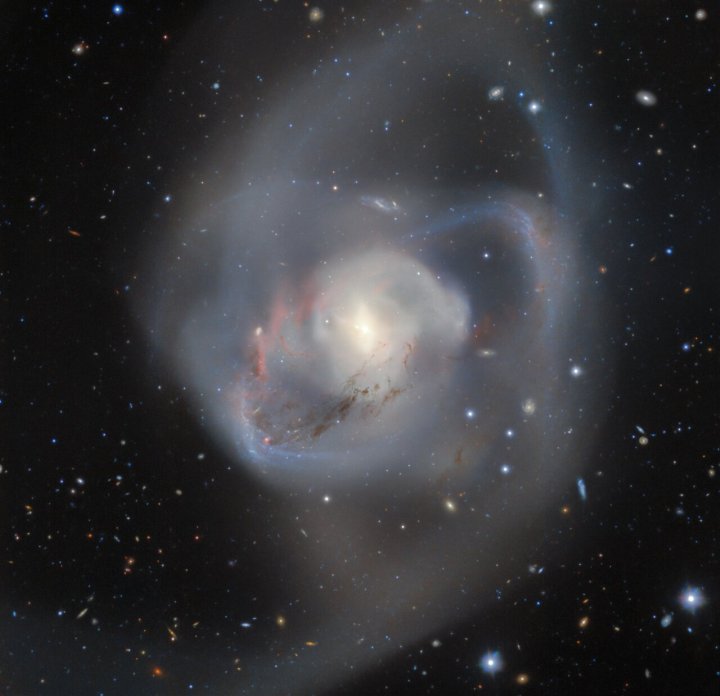As hard as it is to picture, with billions or even trillions of galaxies in the universe, entire galaxies can collide with each other. When that happens, one galaxy can be destroyed or the two can merge into one. But even in the case of galaxy mergers, the effects of the collision are often visible for billions of years afterward.
That’s shown in a recent image taken by the Gemini South observatory, which shows the chaotic result of a merger between two spiral galaxies 1 billion years ago.

The resulting galaxy, called NGC 7727 and located 90 million light-years away, shows the cloudy blobs of dust and gas that now swirl around the galactic core. The stretching arms of the spiral galaxies have been pulled apart by the gravitational forces of the merger, leaving behind an unstructured shape which leads this to be classified as a “peculiar galaxy.” Despite its messy appearance, parts of the newly formed galaxy are ideal locations for the formation of stars as pockets of dust and gas and pulled around and pushed together.
At the heart of almost every galaxy is an enormous supermassive black hole, but this galaxy is a little different. It has not one but two supermassive black holes, one from each of the original galaxies. One of these is 154 million times the mass of the sun, and the other just 6.3 million times the mass of the sun, and the two are located 1,600 light-years apart in their own galactic nuclei.
This galaxy won’t remain in this unusual state forever though. Eventually, the huge gravitational forces of the two supermassive black holes will pull them closer and closer together, and scientists estimate that the two will merge in around 250 million years’ time. This monumental event will send out ripples in spacetime called gravitational waves and will create an even larger supermassive black hole.
Editors’ Recommendations

